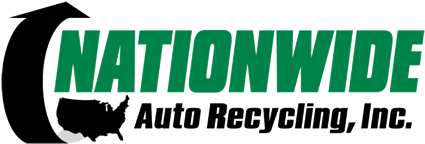With rising repair costs and vehicle shortages, more drivers are turning to used auto parts as a smart, sustainable way to keep their cars on the road. Whether you’re looking to upgrade or repair a new or old vehicle, going for used parts can easily seem like a bad idea. If that’s you, you need to know the benefits of used auto parts that lead many smart vehicle owners and experts to vehicle salvage yards.
Let’s review each benefit:
1. Availability
Finding a used vehicle part is often easier than looking for a brand new one, and that’s because there are countless vendors selling used parts, including auto auctions, salvage yards, used parts dealers and online sellers.
2. Eco-friendliness
Besides causing environmental pollution, creating new vehicle parts usually requires natural resources. When you buy used auto parts, you keep them away from landfills and help to manage pollution.
3. Cost
New vehicle parts are usually more expensive than used parts. It’s not uncommon for people to spend hundreds of dollars on a new part when used auto parts cost significantly less.
4. OEM Standards
Used parts usually meet OEM specifications derived from other people’s vehicles. That means that you can rest assured that the part you’re buying is up to industry standards, especially if you visit a reputable vendor.
5. Rare Parts
People who own older or rare vehicles often go to salvage yards or used auto parts vendors. Besides taking too much time, finding new versions of these parts can be exhausting and expensive.
6. Compatibility
If you’re struggling to find the right match for your vehicle, it often makes sense to approach a used car part dealer. They’ll direct you to genuine parts taken from vehicles identical to yours.
7. Quality
If you look in the right places, you can find high-quality used parts. For example, it’s easy to find nearly brand-new fuel system parts in salvage yards.
8. Knowledge and Expertise
A top-tier salvage yard will have a helpful sales staff that provides their knowledge, expertise, and advice during the buying process. They will educate you during the buying process and recommend parts based on compatibility and fit, to help you find the right used part for your vehicle.
How to Buy Used Auto Parts (Best Practices)
1. Verify Compatibility
Always confirm that the part fits your specific vehicle by checking the VIN or part number. Even small differences in model year or trim can make parts incompatible.
2. Buy from Reputable Sellers
Choose established salvage yards or verified online marketplaces with clear return and warranty policies. Reputable vendors inspect and test parts before selling them.
3. Inspect for Damage or Wear
Ask for clear photos or see the part in person if possible. Look for cracks, rust, or signs of excessive wear that could affect performance or safety.
4. Ask the Right Questions
Find out the mileage and condition of the donor vehicle and whether the part was tested. Don’t hesitate to ask if the part is OEM or aftermarket.
5. Compare Prices Wisely
If a deal seems too good to be true, it probably is. Compare prices across multiple sellers to make sure you’re getting fair value for a functional part.
6. Keep Records and Receipts
Always keep your purchase receipt, part number, and seller information. This documentation helps with warranty claims, returns, and future repairs.
Closing Out: Buying Used Auto Parts
Clearly, regardless of your vehicle type, there’s no reason why you should shy away from used parts. Just ensure you work with a reputable vendor to get the benefits of used auto parts and avoid any surprises down the road.
If you’re looking for used auto parts in Massachusetts, we encourage you to visit our salvage yard in Lancaster, or view our website to see the latest inventory. We can even ship a part directly to your address, even if you live out of state.

